Washing treatment of Costa Rican boutique coffee Tara Zhu producing area coffee flavor in Fatara Zhu producing area
When I came to the Qianjie Cafe, many of my friends just started the coffee and asked the barista in the front street, "what kind of coffee beans are suitable for novices and how to choose their own coffee beans?" If guests do not have any special definition of coffee flavor in the producing area, Qianjie will decisively recommend "Qianjie food beans" in most cases, and Qianjie will launch specific corresponding beans only when guests have a demand for "pursuing a more specific coffee flavor". For lovers who don't know their own tastes. Qianjie coffee rations beans can allow everyone to drink the main bean flavor of the producing area at a low price, so as to better choose which producing area coffee is more suitable for them, and it is also the most preliminary understanding of the flavor of a producing area.
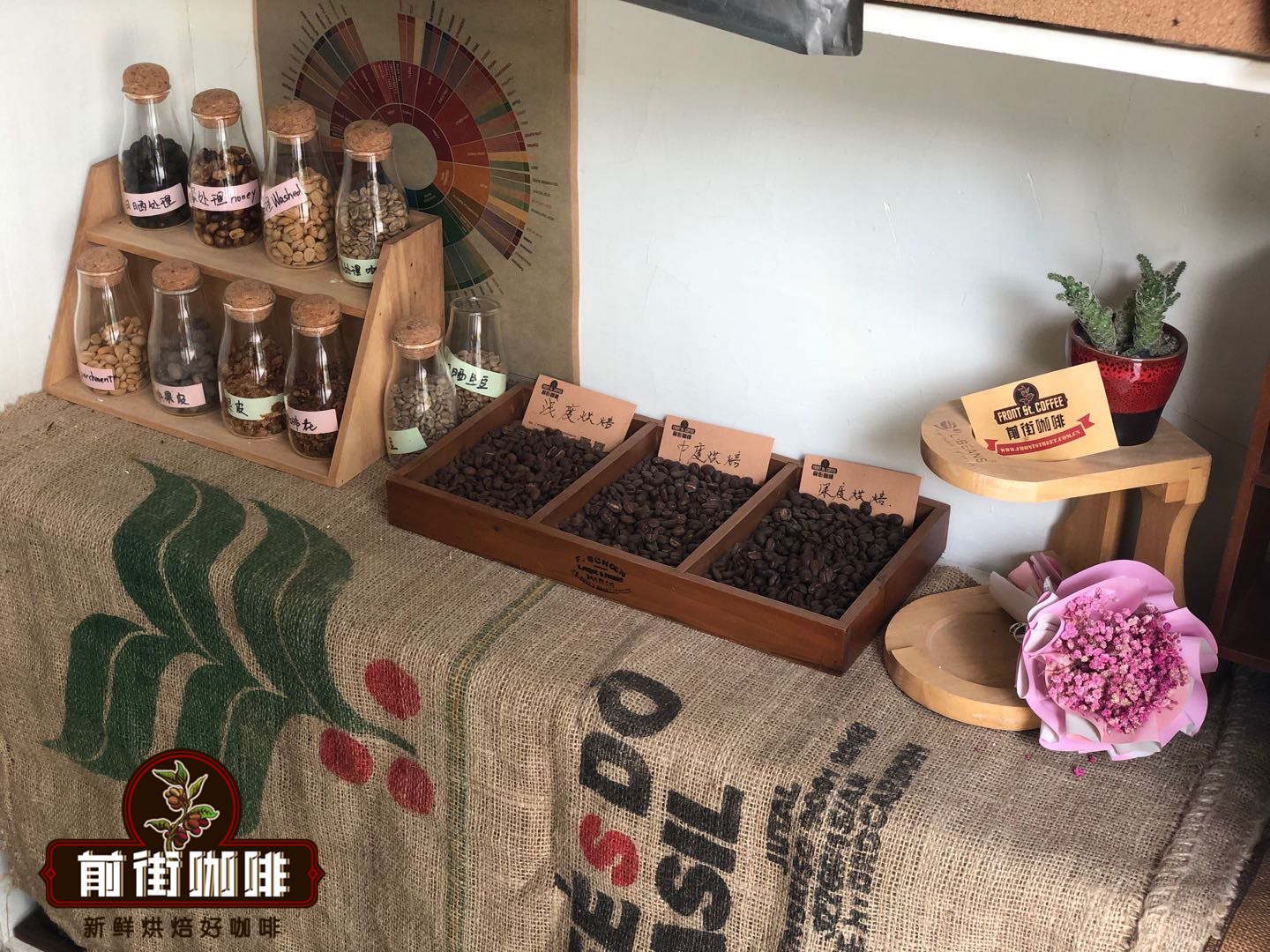
In addition, most of the grain beans in Qianjie are treated with water, because the water washing method is not only the basic flavor of a producing area, but also the beginning of the understanding of the flavor of the producing area. Qianjie Coffee believes that the water-washed coffee has obvious acidity, good cleanliness, moderate touch and the most consistent quality of raw beans.
There are seven producing areas of grain beans on the front street, namely, Yegasuefei of Ethiopia, Tarazu of Costa Rica, Huilan of Colombia, Lindong Mantenin of Indonesia, Baoshan of Yunnan, China, Vivette Nanguo of Guatemala, and South Minas of Brazil.
Next, let's talk in detail about the representative of the balanced flavor of grain and beans in the front street-Costa Rica Tarazhu, to see what the characteristics of this producing area are.
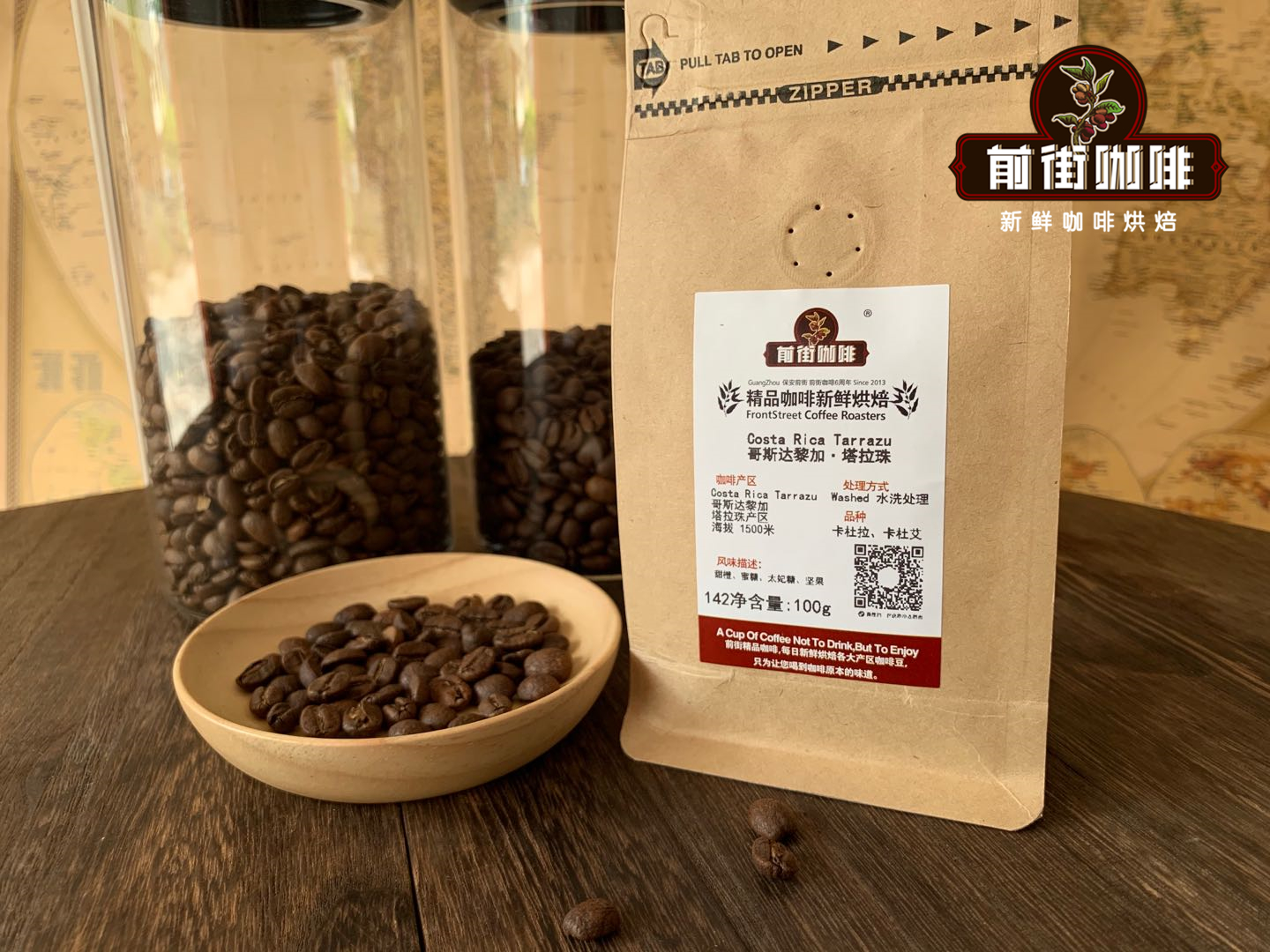
Country: Costa Rica
Producing area: Tarazhu
Altitude: 1500 m
Variety: Kaddura, Kaduai
Treatment: washing treatment
Flavor: orange, honey, toffee, nuts
Coffee producing area-Tarazhu
Tarazu, located in the south of the country's capital, San Jos é, is one of the most valued coffee growers in the country. La MinitaTarrazu coffee is a famous local product, but it produces a limited amount of coffee, about 72600 kilograms a year. It is grown on a piece of land called LaMinita, owned by the last three generations of the McAlpine family in the UK, and owns the LaMinita estate in Tarazu, which produces just 160000 pounds a year. In fact, this land can produce more than 450 tons of coffee a year. But Tarazu Latin America coffee is grown without artificial fertilizers or insecticides, and its harvesting and selection are done by hand, in order to avoid some damage to coffee beans caused by air spray selection.
Tarazu in the 2014 COE competition, 23 beans on the list, a total of 17 came from Tarasu producing areas. Tarasu is located in the fertile volcanic region of Central America, which has a humid climate and fertile volcanic soil, abundant rainfall throughout the year, high altitude, and dense forest natural shade, providing a unique growth environment for coffee growth. Pesticides or artificial fertilizers are not used in the planting process. Nearly 95% of the coffee beans produced in Tarazhu Alpine are very hard beans (SHB), which generally grow above 1500 meters above sea level.
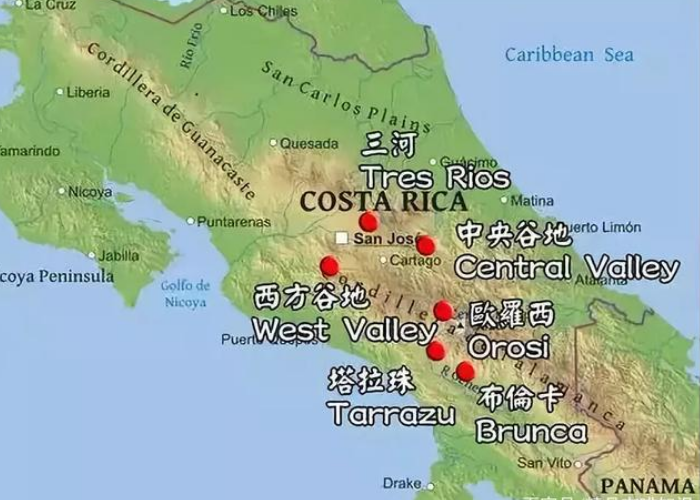
At present, the Tarazhu Cooperative has 26 member estates. Among them, Raminita Manor is one of the most famous coffee farms in Tarazhu. La Minita produces about 1 million pounds of coffee beans a year, and after the entire estate produces coffee beans that are carefully selected to remove defects, only 15 per cent of the coffee beans can bear the mark of the Laminita estate, while the rest enter the coffee market. But the prices of these coffees entering the market are still higher than those of other beans produced in Central America. Raminita's strict management of all aspects of coffee production has established a world-class reputation and can be called a world-renowned coffee farm.
Costa Rican coffee is famous for its balanced flavor, rich chocolate and smooth taste. Tarazu, located in the south of the capital SanJose, is one of the most valued coffee growers in Costa Rica. Tarazhu coffee beans are full-grained, full-bodied BODY, smooth taste, rich chocolate and nutty aromas, moderate acidity and attractive aromas.
Coffee variety
Kaddura, a natural variety of Arabica Bourbon, was discovered in Brazil in 1937. Its tree is not as tall as bourbon and smaller. Due to inheriting the blood of bourbon, the resistance is weak, but the yield is higher than that of bourbon. Although found in Brazil, Kaddura is not suitable for growing in Brazil, so it is not planted on a large scale in Brazil, but is popular in Central and South America, such as Colombia, Costa Rica and Nicaragua. Kaddura is planted on a large scale.
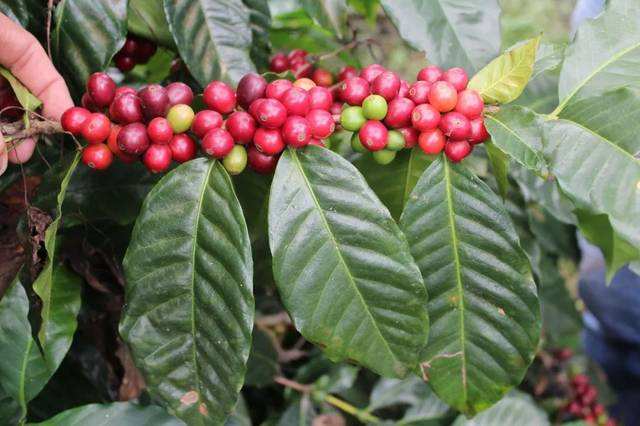
Kaduai is a hybrid of New World and Kaddura. It not only inherits the advantage of the low body of Kaddura tree, but also makes up for the defect of Kaddura's weak fruit without the wind. The result is solid and not easy to fall when the strong wind blows. The biggest regret is that its overall flavor is slightly more monotonous than Kadura. Kaduai also has the difference between red fruit and yellow fruit, and red fruit has a better flavor than yellow fruit. Kaduai, Kaddura, New World and bourbon are the four main varieties of coffee in Brazil.
Washing treatment method
In the washing method, the selected coffee cherries were put into the peeling machine, and the peel and pulp were removed initially. Put the coffee beans with residual pectin into the water and let them ferment for about 24 hours. After fermentation, the raw coffee beans with parchment are washed in a flow tank to remove the pulp and pectin. After washing, dry the coffee beans or dry the coffee beans with the help of a dryer to reduce the moisture content to about 12%, and finally remove the parchment of raw coffee beans.
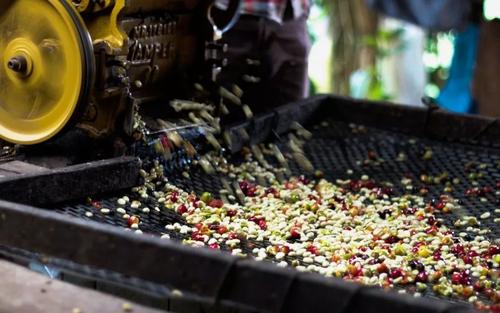
Qianjie coffee brewing recommendation
Water temperature: 90-91 degrees
Degree of grinding: BG#6m (fine sugar size / 20 sieve bowl sieve powder to 80%)
Ratio of powder to water: 1:15
Amount of powder: 15g
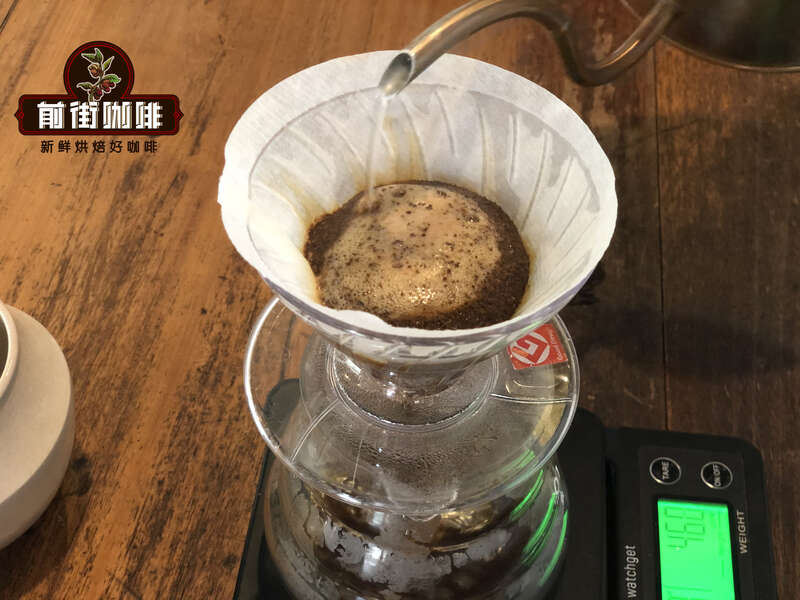
Qianjie cooking technique:
In the first stage, 30 grams of water is injected for 30 seconds, followed by 95 grams (about 125 grams indicated by the electronic scale). The injection is completed in about 1 minute, and the remaining 100 grams are injected at 3 places in the powder layer when the water level drops to 2 grams (about 225 grams shown by the electronic scale). About 1 minute and 40 seconds. 2: 03 "trickling is completed, remove the filter cup and complete the extraction.
Cooking flavor: the entrance is sweet and sour orange, middle nutty, chocolate flavor is obvious, caramel back sweet long-lasting, and with some Chinese fir aroma, the overall balance.
Important Notice :
前街咖啡 FrontStreet Coffee has moved to new addredd:
FrontStreet Coffee Address: 315,Donghua East Road,GuangZhou
Tel:020 38364473
- Prev
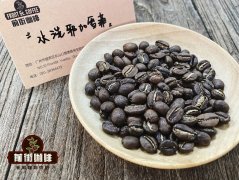
Flavor characteristics of Yega Xuefei Coffee beans by Flavor washing treatment in Yega Xuefei producing area of Ethiopia
I believe that many fans' understanding of Qianjie coffee began with Qianjie rations and beans. Many friends who don't know about Qianjie may misunderstand the series of food and beans in Qianjie. They may think that the word rations is just for people who don't know coffee to satisfy their curiosity about coffee beans. Sometimes online activities only cost 9.9%. The quality of beans will be bad, the flavor will be very miscellaneous, and so on.
- Next

What is American coffee? What's the difference between American coffee and Australian black coffee?
For people who don't know much about coffee, a cup of filtered coffee may look like an American coffee shop. But there is no difference between the two. The fundamental difference is simple: although American coffee is made by adding water to espresso, filtered coffee is made in a completely different way. I have something to do with
Related
- Beginners will see the "Coffee pull flower" guide!
- What is the difference between ice blog purified milk and ordinary milk coffee?
- Why is the Philippines the largest producer of crops in Liberia?
- For coffee extraction, should the fine powder be retained?
- How does extracted espresso fill pressed powder? How much strength does it take to press the powder?
- How to make jasmine cold extract coffee? Is the jasmine + latte good?
- Will this little toy really make the coffee taste better? How does Lily Drip affect coffee extraction?
- Will the action of slapping the filter cup also affect coffee extraction?
- What's the difference between powder-to-water ratio and powder-to-liquid ratio?
- What is the Ethiopian local species? What does it have to do with Heirloom native species?

